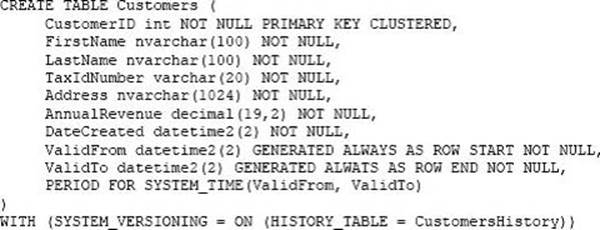Which Transact-SQL statement should you run?
Note: This question is part of a series of questions that use the same or similar answer choices. An answer choice may be correct for more than one question in the series. Each question is independent of the other questions in this series. Information and details provided in a question apply only to that question.
You create a table by running the following Transact-SQL statement:

You need to develop a query that meets the following requirements:
– Output data by using a tree-like structure.
– Allow mixed content types.
– Use custom metadata attributes.
Which Transact-SQL statement should you run?
A . 
B . ![]()
C . 
D . 
E . 
F . ![]()
G . ![]()
H . 
Answer: F
Explanation:
In a FOR XML clause, you specify one of these modes: RAW, AUTO, EXPLICIT, and PATH.
– The EXPLICIT mode allows more control over the shape of the XML. You can mix attributes and elements at will in deciding the shape of the XML. It requires a specific format for the resulting rowset that is generated because of query execution. This row set format is then mapped into XML shape. The power of EXPLICIT mode is to mix attributes and elements at will, create wrappers and nested complex properties, create space-separated values (for example, OrderID attribute may have a list of order ID values), and mixed contents.
– The PATH mode together with the nested FOR XML query capability provides the flexibility of the EXPLICIT mode in a simpler manner.
References: https://msdn.microsoft.com/en-us/library/ms178107.aspx
Latest 70-761 Dumps Valid Version with 212 Q&As
Latest And Valid Q&A | Instant Download | Once Fail, Full Refund

